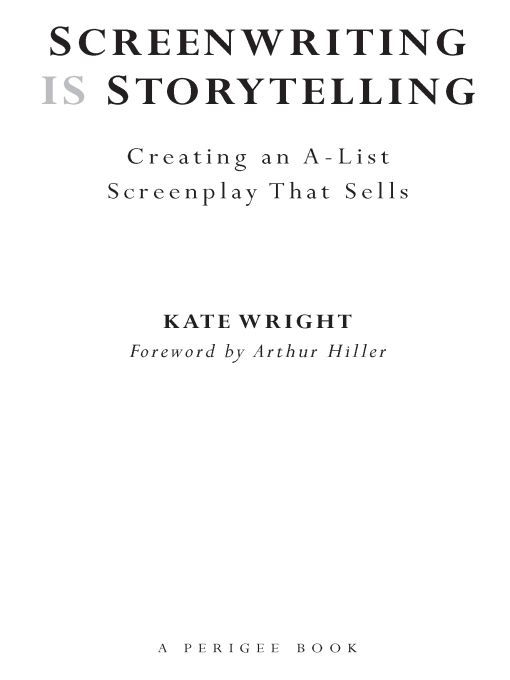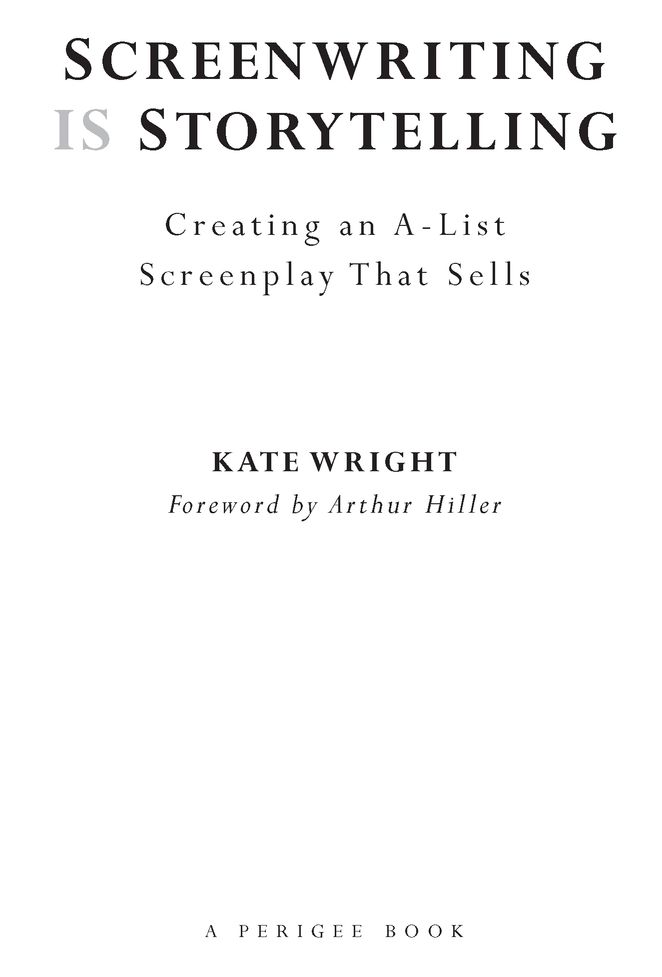Table of Contents
To the gifted storytellers who taught me, especially Tennessee, Jason, Robaire, Lenore, and Jim
Acknowledgments
THANKING those who have influenced me and supported me over the years is such a privilege...
The capacity to develop a worldview is a gift, but there are those who, by their generosity of spirit, have helped me to shape a perspective that sustains me: my parents, siblings, and extended family, the Jesuits of Georgetown University, the producers of Paulist Productions. Not enough can be attributed to my sister, Marguerite, about whom it could be said that no matter what road you take in life you will always meet her on her way back.
It is said that we create our own opportunities, but there are so many who generously open the doors for us as we move along: U.S. Senator John Culver, Michael Eisner, Patricia Sarcone, Arthur Hiller, Ted Field, Robert Butler, Harry Sherman, Robert Cort, David Madden, Nancy Bein, Marian Brayton, Peter Frankovich, and Kathleen Mc-Carthy.
Dr. Linda Venis, Director of UCLA Extensions Writers Program, and her staff have enthusiastically supported my efforts over the years. By creating a signature class based on this book, I hope to reflect their confidence in me.
The world of the unconscious is a mysterious world, but thanks to Dr. Albert Mason and Dr. Michael Paul, who have guided me with the insight that there is a truth receptor. Unconscious experience is unconsciously stored in the human condition: We experience truth even when others dont want us to discover it.
Where would this book be without students who have taught me? A special mention to Carl Kowlessar, Joseph Costa, Chris Koefoed, Doug Mayfield, Lynda Taylor, Dan Brandler, Ethan Wayne, Dawn DeKeyser, Michael Kingston, Reid Denham, Will Tomlinson, Werner Disse, Nancy Smith, Lola Tiegland, Terry Smith, and David Cowper, whose talent and genius have taught me everything you need to know about screenwriting.
There is always someone who jump-starts a project. Dr. Lynda Toth, thank you for recognizing my breadth of experience and introducing me to New York book agent Madeleine Morel, whose dynamic personality shaped the book proposal that quickly landed in the hands of Perigee/Putnam Executive Editor, Sheila Curry Oakes. Sheilas extraordinary skills as an editor continue to amaze and amuse me.
Syd Field, Frank Swertlow, Camilla Broderick, Rochelle Edwards, Theresa Dunn, Colleen Crahan, Heidi Brennan, Judi Fogelman, Lisa Chorna, Judy Hanauer, Guy Levy, Louis Raphael, Paula Navar, and Vanessa Preziose have directly contributed to this book in ways that cannot be measured. My editorial assistant, the ever-curious Athena Schultz, has literally become the point-of-view character within the textshe not only knows the spelling of every actors name in Hollywood, she requests clarification exactly where its needed.
Literary agents are the unsung heroes of Hollywood. Martin Shapiro, Michael Shlain, and Dave Warden rule. Rowland Perkins even takes time out for golf.
Lenore Wright and James Carabatsos have been personally generous in every way. They have been my touchstones as storytellers, on the golf course, and in life. Many other talented writers and filmmakers have influenced me to new levels storytelling: David Engelbach, T. S. Cook, Tom Rickman, Michael Nemec, John Riley, John Sacret Young, Frank Pierson, Reginald Rose, Chris Canaan, Chet Walker, Owen Roizman, Robert Butler, James Cameron, Sydney Pollack, Steven Spielberg, Andrew Davis, the late Jason Miller, and the legendary Tennessee Williams.
Love, affection, and friendship sustain us throughout life, especially as we mature. Our loved ones are always with us, even when theyre not. God bless the absent ones.
Kate Wright
Foreword
STORYTELLING is innate to the human condition. Its underpinnings are cerebral, emotional, communal, psychological. One of the storytellers main responsibilities is to resonate in the audiences psyche a certain something at the end of it all, to emotionally move the audience, to compel the audience to get it on a visceral level.
Screenwriting Is Storytelling holds this responsibility uppermost in mind. How does the writer connect to the inner story? How does he or she assure that the audience connects to it as well? Answering these fundamental questions is what distinguishes this book from the scores of how-to books that line library shelves and bookstore displays. It is pitched to a more sophisticated level of thinking about how we, as screenwriters, become storytellers. Aesop may not have been quite as analytical about the process, but, like all good storytellers, knew the inner story. This book takes the reader to that almost preconscious level of how and why a story resonates with its audience.
Using many popular references as examples, author Kate Wright discusses the theory of storytelling, and then shows how that theory is applied in the commercial world of television and film, demonstrating the complex process by which a writer moves from thinking about an idea, to creating the story concept, to actually writing a major motion picture screenplay.
Unique to this book is the authors approach to the concepts of spine and characterization as the secret to creating the magic in screenwriting. The storys spine generates character behavior that connects us, as storytellers, to the inner story, and from inside the story, we begin to understand what the story is about in a deeper, more meaningful way, as opposed to merely creating the actions of the characters without any dramatic or thematic significance. In the course of creating spine, a screenwriter must become his or her own characters, and must also assume other personas (psychologist, doctor, engineer, etc.) in order to understand what is happening inside the characters that may be lacking in the story. This book shows how to successfully apply this developmental strategy using characters as ideas and behavior as spine to create problem-solving story solutions and integrating eight distinctive avenues of thought into the storytelling process.
Emmy Award winner Kate Wright (Billy, The Conspirator Saint, The Mary Thomas Story, among others) offers a sophisticated viewpoint distilled from her experience as a film executive, producer, writer, teacher, and script consultant. Her knowledge, wisdom, and experience as a storyteller shine throughout this book, complemented by her vital mind, exquisitely attuned to this complex process of how a writer advances from creating an idea to creating a screenplay. Equally important, she knows how to articulate that mysterious process clearly and concisely.
Kate Wright has enough creative energy to power the sun. Undoubtedly, this book will share a great deal of that light with our modern-day Aesops.
Arthur Hiller, director of Love Story,
The In-Laws; former president of the
Directors Guild of America; and
two-term president of The Academy
of Motion Picture Arts and Sciences
Introduction
WORKING with two of Americas greatest geniuses, Pulitzer Prize-winning playwright Jason Miller and the legendary Tennessee Williams, offered me a tremendous entre into the world of storytelling. As major American icons, their extraordinary talent inspired me; and as screenwriters, their remarkable ability to work through the visceral process of storytelling taught me that good stories communicate


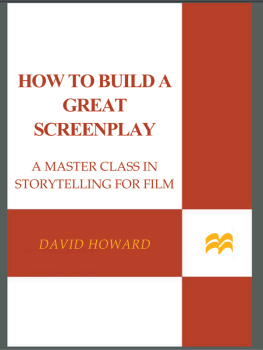
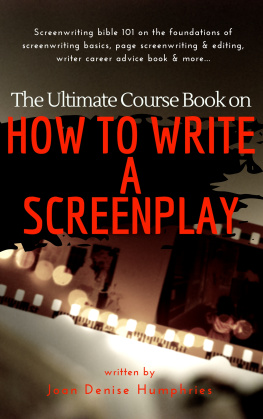
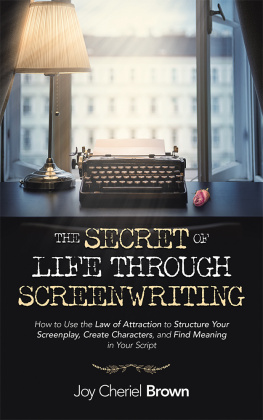

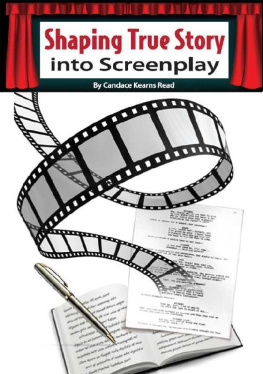
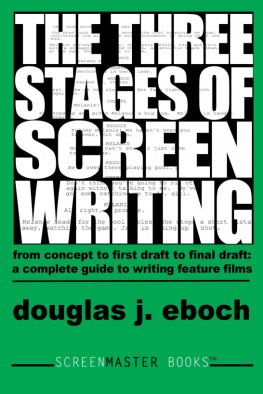

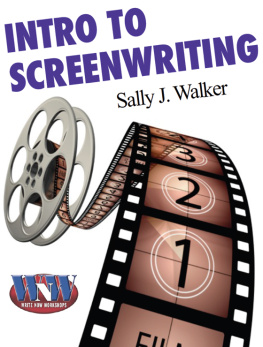
![Watt - The 90-day screenplay : [from concept to polish]](/uploads/posts/book/103527/thumbs/watt-the-90-day-screenplay-from-concept-to.jpg)
